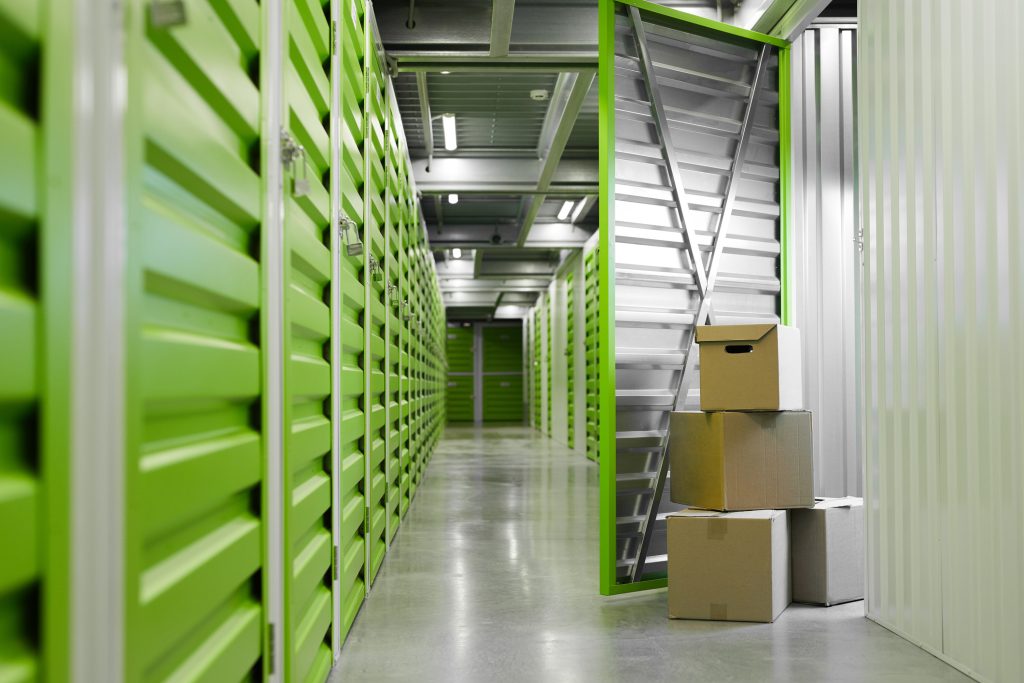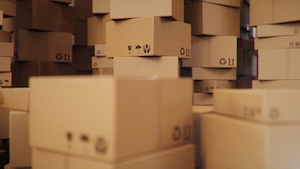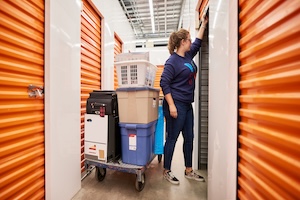Earlier this month, a fire that started at a polystyrene factory in Bedfordshire spread to a local storage facility (Storing.com), totally destroying the entire facility and the belongings of hundreds of customers.
In an article by the BBC, it is stated that more than 60 crews from 4 counties tackled the blaze in Bedfordshire, but despite their efforts, the fire could not be kept from spreading beyond the factory to Storing.com’s premises. In an email to their customers, Storing.com report that the fire was responsible for “totally destroying our facility where [customers] unit/s were kept”.
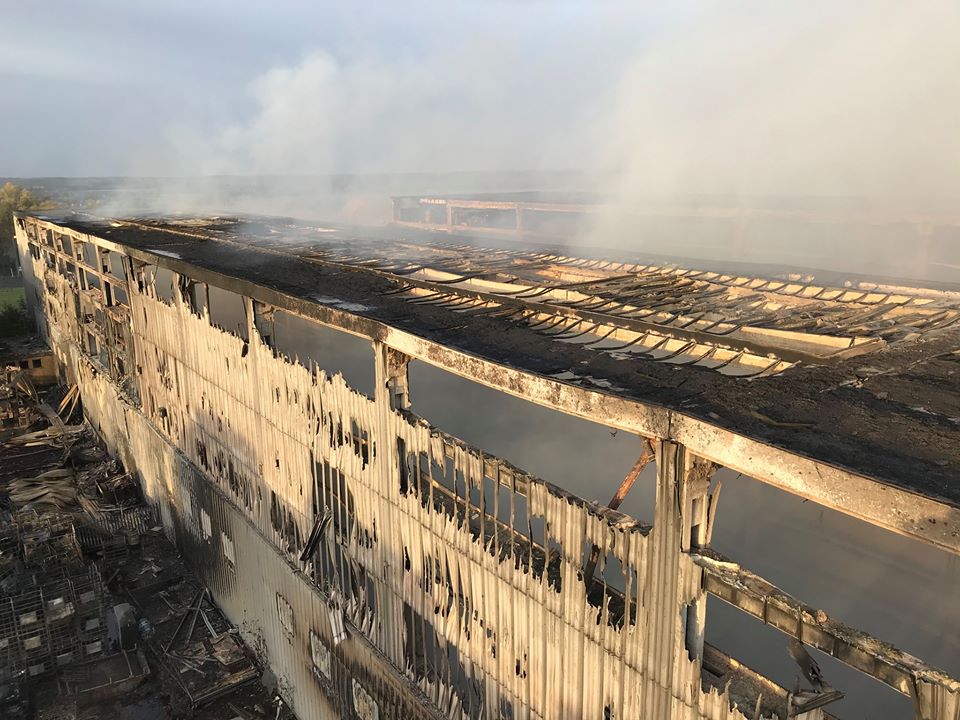
Hundreds of customers lost the entire contents of their storage unit – and were only informed a week after the fire of what had happened. This has even led to people who lost their belongings uniting to form an action group on Facebook (Storing.com Twinwoods Action Group) to ask the facility to do more to answer their questions on what happened, and if anything will be done to recover the value of items lost.
“I feel quite numb,” said Abi Roberts, a customer affected by the fire. “There was nothing really of any significant monetary value except perhaps an antique bureau but my God all the memories from my life…now gone. I keep remembering items lost.”
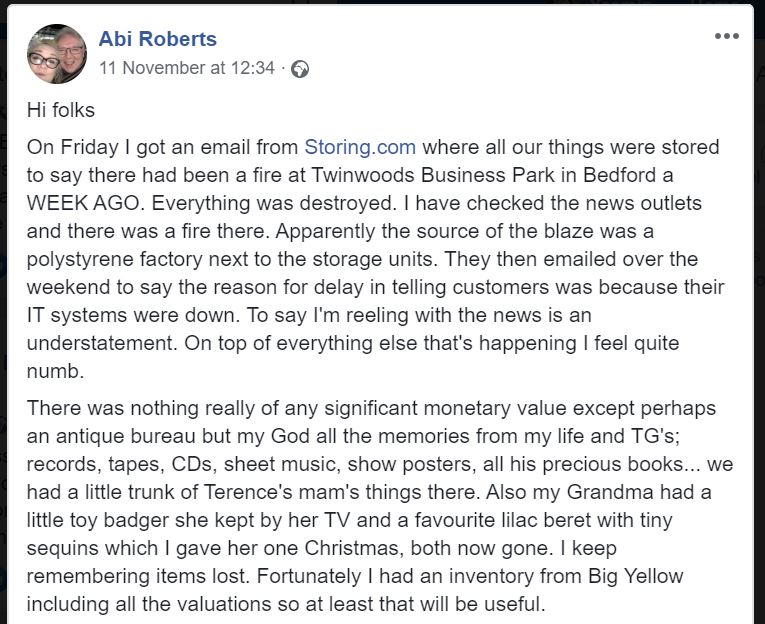
Sadly, this isn’t the first time something like this has happened in recent years.
On New Year’s Eve in 2018, Shurgard self-storage in Croydon burned down, with customers losing thousands of pounds worth of belongings.
It was later revealed that the facility was accused of having a ” lack of sprinklers and staff on site”, with Labour MP for Croydon North Steve Reed stating that:
“Not only was the design of the building not constructed to contain fire, it sounds like it was constructed to facilitate the spread of fire,” he told the programme.
“The fact that the walls didn’t go up to the top of every unit allows the flames to spread from one unit to another, the fact you have no idea what was in each unit… there could have been flammable material.
“There were no sprinklers in place. It sounds to me that these people have been sold services on the basis that this facility was safe and secure, but actually no measures have been put in to make sure a fire like this could get put out rapidly.”
Similarly, a blaze in September 2017 at Safehouse Self-Storage in Tottenham destroyed hundreds of customers belongings. Worse still, in an article from the Guardian, it was reported that around 500 of those people are thought to have had only minimal cover for the items they had in storage, and are thought to have lost nearly everything.
Time and time again, we’re seeing the same story: customers are misled into buying minimal insurance cover for their belongings when putting them into storage, believing the risk to their items is minimal, only to be left devastated when an incident like this happens.
In the 2018 Shurgard fire, for example, Mark Brewer, a beauty business entrepreneur, lost over £180,000 worth of stock, bringing his company to a halt – and when it came to insurance, Mr Brewer said he had not been offered “anything”.
How Can We Prevent This From Happening Again?
1. Make Sure You Have the Correct Insurance in Place
First of all, insurance providers and self-storage facilities need to work harder to make sure members of the public know that there are real risks when storing your items in storage – and having the proper insurance policy to cover the full value of the items you have stored is essential.
Many customers do not realise that they are not obliged to buy the standard insurance from their self-storage facility – or that this is often not the most affordable, or most comprehensive policy they could get.
Simply buying the minimal insurance directly from your storage facility could leave you paying more money for less cover – a review from Telegraph money found that customers save money shopping with third-party insurers such as Surewise.com, and you can also make sure that the value of the items you are storing is fully covered from these kinds of natural disasters, as well as a myriad of other unexpected events.
2. Ask Your Storage Company What Precautions They Have In Place
Three fires in as many years suggest its time storage facilities do their part to make sure fires are preventable – and if they do occur, that they can be isolated and put out without destroying an entire warehouse.
We would highly recommend that you ask your storage company what kind of fire precautions they have in place. For example, sprinklers should be a bare minimum – but do they also have alarms automatically linked to the fire brigade?
CCTV, fenced perimeters, and manned surveillance are all hallmarks of a reputable, secure storage facility – but fire safety should be a high priority too.
3. Consider Where You Store Your Irreplaceable Items
Losing furniture and stock to a fire is devastating – but with the right insurance, at least the value of those items can be replaced. When it comes to irreplaceable items such as personal letters, photos, rare collectables, and sentimental items, however, no financial reparation can really replace what those items mean to you.
In these cases, it might be best to consider where you store these items, and if there is somewhere safer to put them – for example, with a friend or family member? Accidents can happen anywhere of course, but having your irreplaceable items with someone that you trust and know personally can give you that added peace of mind.
If you have items in storage, don’t make the mistake of thinking they’re always going to be secure – this most recent fire shows that in one day, everything can change. Accidents can happen – so don’t wait until after the fact to think about covering the value of those items.
Our storage insurance enables you to select the level of cover you need according to the value of the items you have stored, so you’ll never be left in the dark about exactly how much you’re covered for should an incident like this happen at your storage facility.


